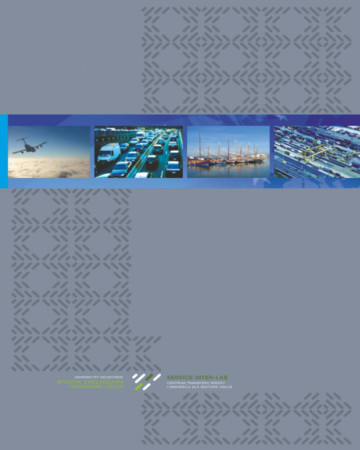
ISSN: 1644-275X
eISSN: 2353-3005
OAI
DOI: 10.18276/ptl.2017.37-32


Issue archive /
nr 1 (37) 2017
Bronka i inne porty Rosji nad Zatoką Fińską
(BRONKA PORT AND OTHER RUSSIAN PORTS IN THE GULF OF FINLAND)
| Authors: |
Tadeusz
Palmowski
Wydział Oceanografii i Geografii, Uniwersytet Gdański |
| Keywords: | Gulf of Finland Bronka Port Ust-Luga Primorsk |
| Data publikacji całości: | 2017 |
| Page range: | 11 (233-243) |
| Klasyfikacja JEL: | L91 R49 |
Abstract
According to the Russian maritime strategy, the Baltic Sea is for Russia the most important trading route to European countries. Modernisation, development and the construction of new ports in Russia concentrate in Sankt Petersburg and the Gulf of Finland. The growing cargo handling capacity of ports will lead to reducing the dependence of the Russian Federation on transit transport. Cargo volumes handled by main Russian ports in the Gulf of Finland constitute over 85% of the total turnover of Russian ports on the Baltic Sea. The ports in Ust-Luga and Primorsk noted their biggest turnover in 2015. In the years 2008-2015, cargo volumes in Ust-Luga rose eleven fold. Sankt Petersburg is the biggest container port in the Baltic Sea Region. The shortage of development areas, caused by the urban built-up of Sankt-Petersburg, has exhausted further port development. At the end of 2015, Bronka Port joined the group of the newest container and ro-ro ports. The port is to become the key gate for containers sailing to Russia.
Download file
Article file
Bibliography
| 1. | Biuletyn Informacyjny Wydziału Promocji Handlu i Inwestycji Konsulatu Generalnego RP w Sankt-Petersburgu (2015), 3–4, 7–10, 17–19. |
| 2. | CMA CGM introduces Baltic Levant Express (2016). International Transport Journal. Pobrano z: http://www.transportjournal.com. |
| 3. | Gopkalo, O., Goloviznin, A. ( 2014). Russia’s window onto Europe. Baltic Transport Journal, 4, 90–96. |
| 4. | Grzybowski, M. (2014). Inwestycje w portach morskich Wschodniego Bałtyku. Studia przypadków. Logistyka, 6, 689–698. |
| 5. | Klimek, H. (2005). Konkurencyjność polskich portów morskich na bałtyckim rynku usług portowych. Studia Gdańskie, Wizje i Rzeczywistość, 3, 128. |
| 6. | Pacuk, M. (2015). Porty rosyjskie Zatoki Fińskiej. Logistyka, 3, 3685–3691. |
| 7. | Palmowski, T. (1999). Bałtyckie porty Rosji i perspektywy ich rozwoju. W: J. Kitowski (red.), Prace Komisji Geografii Komunikacji PTG, t. V (s. 285–295). Warszawa–Rzeszów: Komisja Geografii Komunikacji PTG w Warszawie, Wydz. Ekonomiczny Filii UMCS w Rzeszowie. |
| 8. | Port Bronka, New deepwater port in Saint-Petersburg, Russia (2016). Prezentacja. Fenix owner & operator of Port Bronka. Pobrano z: http://eng.port-bronka.ru. |
| 9. | Sokołowski, W. (2015). Rosja. Rozbudowa i modernizacja portów morskich na Bałtyku, Forum Ekonomiczne, 16.11. Pobrano z: http://www.forum-ekonomiczne.pl. |
| 10. | Stala-Szlugaj, K. (2011). Uwarunkowania logistyczne eksportu rosyjskiego węgla z portów płn.-zach. Europy. Przegląd Górniczy, 7–8, 329–334. |
| 11. | http://archive.is/http://www.morport.com/rus/news/document1773.shtml. |
| 12. | http://eng.port-bronka.ru/descr/shema-cin-13. |
| 13. | http://mozg4d.com/bronka.pdf. |
| 14. | http://www.transportjournal.com/en/home/news/artikeldetail/cma-cgm-introduces-baltic-levant-express.html. |
| 15. | http://www.gospodarkamorska.pl/Stocznie,Offshore/nowy-rosyjski-port-wspolpracuje-z-portem-hamburg.html. |